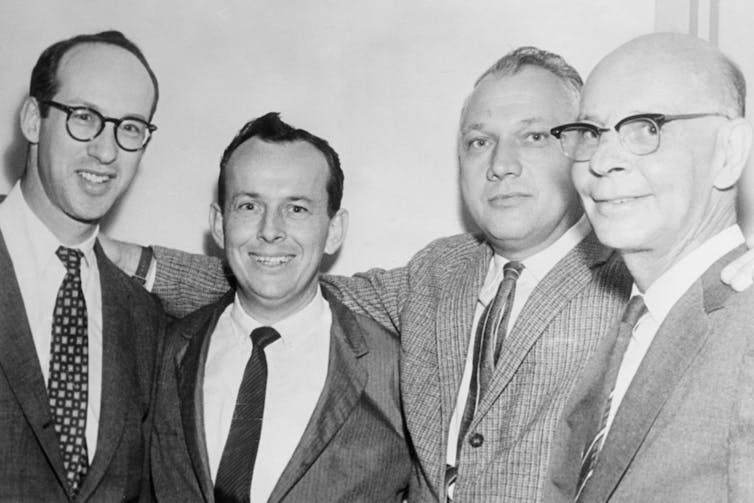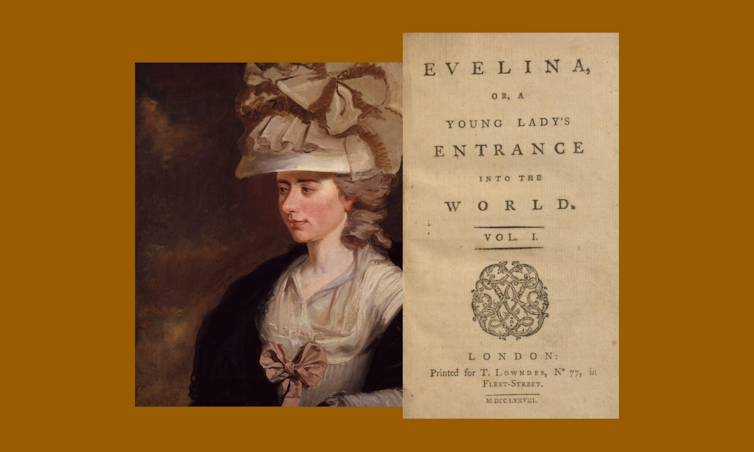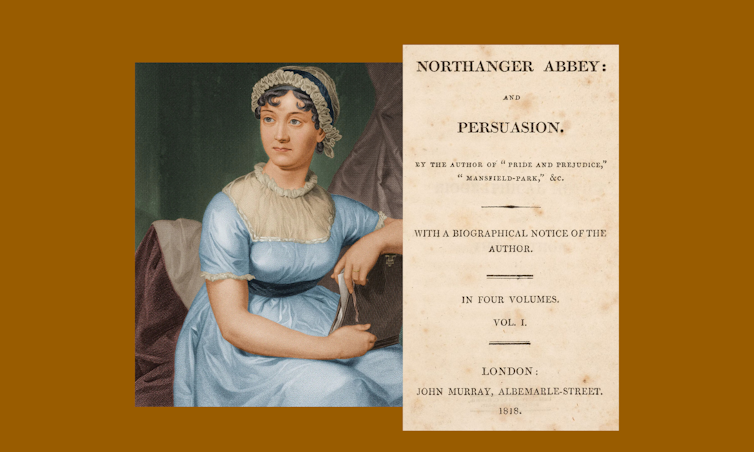Source: The Conversation – USA (2) – By Peter Boumgarden, Professor of Family Enterprise, Washington University in St. Louis
Imagine it’s April 2025 and you’re the owner of a small but fast-growing e-commerce business. Historically, you’ve sourced products from China, but the president just announced tariffs of 145% on these goods. Do you set up operations in Thailand – requiring new investment and a lot of work – or wait until there’s more clarity on trade? What if waiting too long means you miss your chance to pull it off?
This isn’t a hypothetical – it’s a real dilemma faced by a real business owner who spoke with one of us over coffee this past spring. And she’s not alone. As of 2023, of those U.S. companies that import goods, more than 97% of them were small businesses. For these companies, tariff uncertainty isn’t just frustrating – it’s paralyzing.
As a family business researcher and a former deputy administrator of the U.S. Small Business Administration and entrepreneur, we hear from a lot of small-business owners grappling with these challenges. And what they tell us is that tariff uncertainty is stressing their time, resources and attention.
The data backs up our anecdotal experience: More than 70% of small-business owners say constant shifts in trade policy create a “whiplash effect” that makes it difficult to plan, a recent national survey showed.
Unlike larger organizations with teams of analysts to inform their decision-making, small-business owners are often on their own. In an all-hands-on-deck operation, every hour spent focusing on trade policy news or filling out additional paperwork means precious time away from day-to-day, core operations. That means rapid trade policy shifts leave small businesses especially at a disadvantage.
Planning for stability in an uncertain landscape
Critics and supporters alike can agree: The Trump administration has taken an unpredictable approach to trade policy, promising and delaying new tariffs again and again. Consider its so-called “reciprocal” tariffs. Back in April, Trump pledged a baseline 10% tariff on imports from nearly everywhere, with extra hikes on many countries. Not long afterward, it hit pause on its plans for 90 days. That period just ended, and the administration followed up with a new executive order on July 31 naming different tariff rates for about 70 countries. The one constant has been change.
This approach has upended long-standing trade relationships in a matter of days or weeks. And regardless of the outcomes, the uncertainty itself is especially disruptive to small businesses. One recent survey of 4,000 small-business owners found that the biggest challenge of tariff policies is the sheer uncertainty they cause.
This isn’t just a problem for small-business owners themselves. These companies employ nearly half of working Americans and play an essential role in the U.S. economy. That may partly explain why Americans overwhelmingly support small businesses, viewing them as positive for society and a key path for achieving the American dream. If you’re skeptical, just look at the growing number of MBA graduates who are turning down offers at big companies to buy and run small businesses.
But this consensus doesn’t always translate into policies that help small businesses thrive. In fact, because small businesses often operate on thinner margins and have less capacity to absorb disruptions, any policy shift is likely to be more difficult for them to weather than it would be for a larger firm with deeper pockets. The ongoing tariff saga is just the most recent example.
Slow, steady policies help small-business owners
Given these realities, we recommend the final negotiated changes to trade policy be rolled out slowly. Although that wouldn’t prevent businesses from facing supply chain disruptions, it would at least give them time to consider alternate suppliers or prepare in other ways. From the perspective of a small-business owner, having that space to plan can make a real difference.
Similarly, if policymakers want to bring more manufacturing back to the U.S., tariffs alone can accomplish only so much. Small manufacturers need to hire people, and with unemployment at just over 4%, there’s already a shortage of workers qualified for increasingly high-skilled manufacturing roles.
Making reshoring a true long-term policy objective would require creating pathways for legal immigration and investing significantly in job training. And if the path toward reshoring is more about automation than labor, then preparing small-business owners for the changes ahead and helping them fund growth strategically will be crucial.
Small businesses would benefit from more government-backed funding and training. The Small Business Administration is uniquely positioned to support small firms as they adjust their supply chains and manufacturing – it could offer affordable financing for imports and exports, restructure existing loans that small businesses have had to take on, and offer technical support and education on new regulations and paperwork. Unfortunately, the SBA has slashed 43% of its workforce and closed offices in major cities including Atlanta, Chicago, Denver, New Orleans and Los Angeles. We think this is a step in the wrong direction.
Universities also have an important role to play in supporting small businesses. Research shows that teaching core management skills can improve key business outcomes, such as profitability and growth. We recommend business and trade schools increase their focus on small firms and the unique challenges they face. Whether through executive programs for small-business owners or student consulting projects, universities have a significant opportunity to lean into supporting Main Street entrepreneurs.
Thirty-five million small businesses are the engine of the U.S. economy. They are the job creators in cities and towns across this country. They are the heartbeat of American communities. As the nation undergoes rapid and profound policy shifts, we encourage leaders in government and academia to take action to ensure that Main Streets across America not only endure but thrive.
The authors would like to thank Gretchen Abraham and Matt Sonneborn for their support.
![]()
Dilawar Syed is a board member of Small Business Majority, a nonprofit organization.
Peter Boumgarden does not work for, consult, own shares in or receive funding from any company or organization that would benefit from this article, and has disclosed no relevant affiliations beyond their academic appointment.
– ref. For America’s 35M small businesses, tariff uncertainty hits especially hard – https://theconversation.com/for-americas-35m-small-businesses-tariff-uncertainty-hits-especially-hard-262306
















